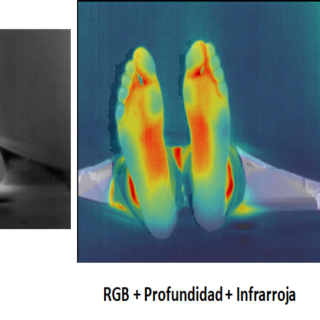This discovery enables the Sun's chromospheric and coronal magnetic fields to be inferred with greater reliability.
Variations in the geometry of the magnetic fields that confine the plasma of the vast solar prominences tend to unleash impressive coronal mass eruptions that can affect the Earth.
The journal Nature will publish these results tomorrow.
BETACAM IMAGES AVAILABLE: Tel: 922 605206 y 922 605371
IAC researchers Javier Trujillo-Bueno (CSIC Scientist), Manuel Collados and Laura Merenda, in collaboration with Egidio Landi Degl'Innocenti and Rafael Manso Sainz of the University of Florence, have discovered a mechanism that produces strong polarization lines in the light received from regions of the Sun's atmosphere where the magnetic field is weak. (Light is characterized not only by its intensity at each wavelength but also by its state of polarization, which is defined by the orientation of the electric field vector of electromagnetic waves in a plane perpendicular to the direction of propagation.)
`We are dealing with a physical mechanism that it is difficult to study in the laboratory,' explains Javier Trujillo-Bueno, `since it is necessary to observe the light that is partially absorbed by a very low density plasma of great size. Also, for the light in question to be produced the atoms of the plasma must be illuminated anisotropically, something that occurs naturally in the outer layers of stellar atmospheres.'
The importance of this discovery, to be published tomorrow (Thursday) in the journal Nature, is that it will enable the magnetic fields in the outer layers of the Sun's atmosphere (the chromosphere and the corona) to be investigated much more reliably. The solar plasma is a very hot, partially ionized gas (in other words, many of the atoms are separated into ions and electrons). Magnetic fields confine the plasma of solar prominences, which are immense loops of plasma extending hundreds of thousands of kilometres above the visible surface of the Sun. Occasionally, when the magnetic field changes the geometry of its lines of force, hugh mass eruptions pour into the interplanetary medium. If these happen to be directed towards the Earth, which they would reach in a matter of days following the explosive event on the Sun, they can produce geomagnetic storms and destroy electronic circuits in satellites, resulting in damage to communications.
`Our group,' says Javier Trujillo-Bueno, `have spent years developing suitable diagnostic techniques for the exploration of magnetic fields in astrophysics, especially in the area of solar magnetism. Thanks to the existence of two physical effects previously discovered in the laboratory (the Zeeman and Hanle effects), we can obtain information on the magnetic fields in the solar atmospheric plasma over a wide range of intensities. Both effects modify the degree of polarization of the light emitted by the atoms at each point.'
This work has combined theoretical studies in atomic physics and numerical simulations, together with observations carried out with a novel instrument developed at the IAC. `This instrument,' says Manuel Collados, `is based on ferroelectric liquid crystals and allows measurements to be made with high precision of the state of polarization of light between approximately 1 and 2 microns. At the moment we are seriously studying the possibility of building polarimeters for future space telescopes based on this technology.'
TITLE OF NATURE ARTICLE:
"Selective absorption processes as the origin of puzzling spectral line polarization from the Sun".
AUTHORS:
J. Trujillo-Bueno (IAC and Consejo Superior de Investigaciones Científicas)
E. Landi Degl'Innocenti (University of Florence, Italy)
M. Collados (IAC)
L. Merenda (IAC and University of Trent)
R. Manso Sainz (University of Florence and IAC)


